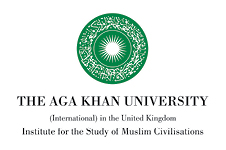About Us
The division of the Middle East into different religious communities has long been seen as a distinctive feature of the region. But the relationship between the caliphal authorities and different religious communities cannot simply be seen as a straightforward application of the Quranic message. Studies of different communities have often been separated from one another and from the political and economic history of the period, and have often prioritised questions of theology or Islamic law. To put it another way, this creates a danger that we examine Christians only as Christians or Jews only as Jews, etc., without considering other aspects to their identity, or that we exaggerate the significance of clerical elites. Here we aim to pose the same questions of group differentiation to different groups within the same project, to help us to identify common variables and to integrate group histories with those of the wider society.
We aim to examine how, when and why different ethno-religious groups flourished in the period 750-1000. The project focuses on the central lands of the caliphate (Iraq and the Levant), partly because it offers a particular wealth of sources and a religious diversity. I have chosen to focus on the Abbasid period for this project because the evidence is rich for many different non-Muslim and Muslim groups. We have already run a workshop concerning Christians, and future workshops will examine Jewish, Muslim and Zoroastrian group formation as well.
In particular, we aim to
investigate how patterns of governance within groups related to those of the state (e.g. did the state’s ability to raise taxes relate to each community’s ability to raise revenue?)
differentiate between identitarian discourse (how people ought to behave) from reality (how people actually behave or classify outsiders)
compare different the histories of different groups to establish common patterns, or highlight differences. For instance, do international links or geographical distribution explain differences in the fates of different groups?
As a hypothesis, we intend to consider how the reality of how groups are maintained at four levels, bearing in mind that there is unlikely to be evidence for each of these levels.
At its core, boundary-making matters because it determines ‘the group’ for the purposes of marriage and inheritance (Goody 1976). Especially in a Muslim-majority context, out-marriage by non-Muslims meant that children and property were lost to those communities (Barton 2015: 39).
At the level above this, the project considers the social contacts of ethno-religious communities. These contacts could be used to benefit the community by its leadership, but they could also be exploited by leaders’ rivals within the community to establish independent links to the rulers of the state. And deep social links might also lead to marriage ties, which would threaten the community’s longterm future.
Social contacts could be policed through control of the behavior and appearance of community members, through diet, bodily marking and naming patterns. Often this policing is focused on women and girls, especially where female out-marriage would threaten the cohesion of the community , and communal boundary-making is often interwoven with the politics of gender (Lapin 2012: 136-8; el-Cheikh 2015: 83-4). As Andreas Wimmer (2013) has observed, social closure is often particularly intense when a community provides welfare to its members or where they receive superior legal or fiscal rights. Both of these were live debates in the Abbasid period, when converts to Islam claimed tax privileges and religious institutions supported the destitute.
A fourth level of group boundary-making are the legitimising narratives that explain why groups differ and why they have different practices, occupy different territories or bear different names. Lawmaking by Muslims and non-Muslims is also an important part of boundary making, and our study concentrates on a very productive period for the legislation of Christian patriarchs and the Jewish Geonim (Simonsohn 2011), as well as the formative period of the Islamic legal schools. History-writing too is a key identitarian discourse, as are folk tales, saints’ lives, sermons, liturgies and ethnographic writing. Often the purpose of these discourses is not to persuade outsiders, but to provide ammunition for debates between insiders over how far to accommodate outsiders in pursuit of personal interests, what kinds of ‘foreign’ practice to accept or how far to accept the leadership of different potential elites within the community.


